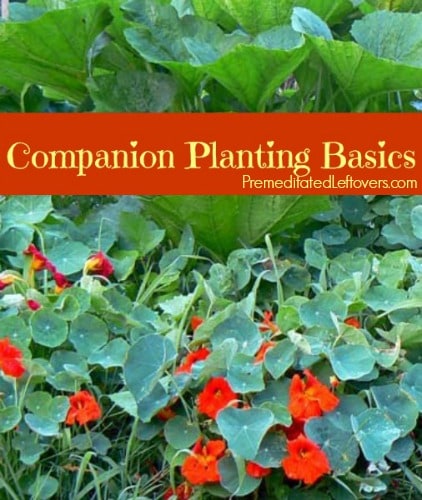
Just like with people, plants have their best friends – you know, those other plants that they like to grow old next to. When you grow certain plant combinations together they have surprising powers to help each other grow and thrive in the garden.
Companion planting works in a few different ways. For instance, tall plants provide shade for sun-sensitive shorter or even vining plants. Companion plants can also prevent pest problems. Plants like onions and marigolds repel a lot of different pests and other plants like Nasturtiums can lure them away from more desirable plants. Another great example of companion planting is attracting beneficial insects like butterflies and bees to the yard by planting butterfly bush or trumpet vines.
Great Combinations of Companion Plants
Corn and Green Beans: One of the oldest companion plantings is with corn and beans. The green beans grow up the corn stalks keeping them off the ground and the beans attract beneficial insects that prey on corn pests. A beautiful friendship was born!
Cucumbers and Nasturtiums: Both plants love to vine out and attract many pests. Nasturtiums are great in salads and have a peppery taste – they also are one of the biggest pest attractors in a garden. They are great to grow with cucumbers so the insects will eat the nasturtiums and leave the cucumbers alone.
Roses and Chives: Gardeners have planted garlic with rose bushes for hundreds of years. Garlic repels pests that eat the rose petals. Garlic chives are also a good repellent and I love them because their white and purple blooms look great at the base of the rose bush.
Tomatoes, Cabbage & Dill: Tomatoes are a natural repellent to the diamondback moth larvae, which are huge caterpillars that chew large holes in cabbage leaves. It is best to grow tomatoes on all sides of the cabbage patch and next to the plants to keep the caterpillars at bay. Any plant in the cabbage family such as broccoli and Brussels sprouts helps keep the dill upright and the dill attracts tiny beneficial wasps that keep cabbageworms at bay.
Radishes and Spinach: Plant radishes among spinach plants to lure leafminers away from the spinach. Since the leafminers don’t do damage to the radish itself, just its leaves, this is a great compromise in the garden.

Potatoes and Sweet Alyssum: One of the best smelling plants in any garden is sweet alyssum. Its tiny flowers attract many beneficial insects. Plant sweet alyssum beside potatoes, or on the edges if growing in a container, and let it spread. The potatoes grow pest free underneath the ground and you get a wonderful scented garden all year long.
These are just a few of the best companion planting combinations, but there are many more. Learning companion planting combinations will help ensure a garden working together and producing beautiful flowers and a bounty of fruits and vegetables.





No comments:
Post a Comment